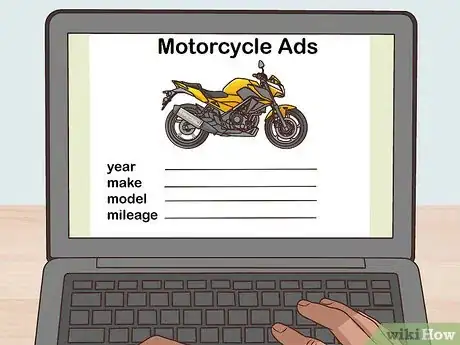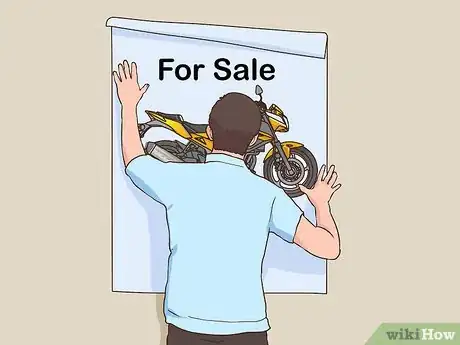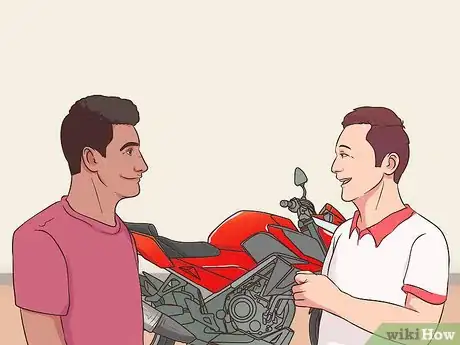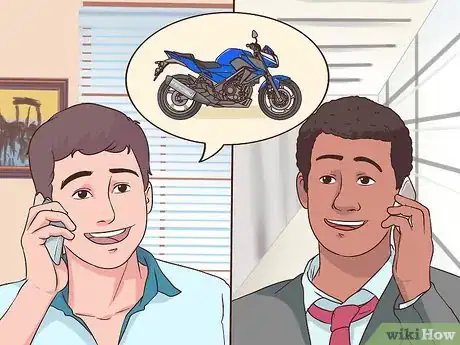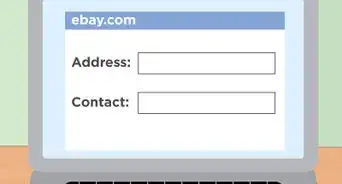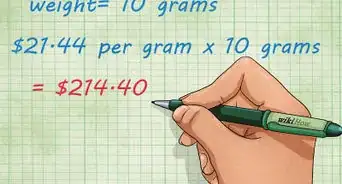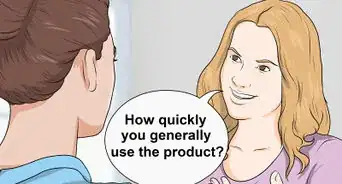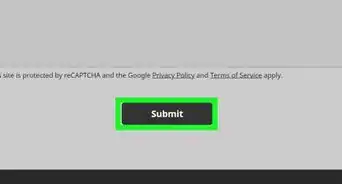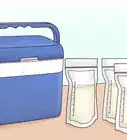This article was co-authored by wikiHow staff writer, Sophia Latorre. Sophia Latorre is a Content Manager on the wikiHow team. Before joining wikiHow, Sophia worked as a technical editor and was published in six International Energy Agency (IEA) Wind Annual Reports. Now, she writes, edits, and reviews articles for the wikiHow Content Team, working to make the content as helpful as possible for readers worldwide. Sophia holds a BA in English from Colorado State University.
This article has been viewed 39,788 times.
Learn more...
If you are ready to sell your motorcycle, you can do so in a few simple steps. Clean and inspect the bike, then determine a price. Advertise the motorcycle online and around town, or ask a dealer to sell it on consignment. Be sure to vet potential buyers and beware of scams! Whether you’ve decided to give up riding or are looking to make room for a new bike, you only need to put in a little time and effort to sell your motorcycle.
Steps
Appraising the Cost
-
1Clean the bike thoroughly. To get the most money for the motorcycle, you should clean and detail it before showing it to potential buyers. Clean the chain, engine, wheels, and body of the bike, including the seat. Remove scuff and boot marks, and polish up any chrome pieces to really make the bike shine.[1]
-
2Inspect the bike and make replacements, if necessary. While you’re cleaning the motorcycle, take note of any damage, dents, or scratches on it. Look for leaks or other issues the motorcycle may have. Get rid of any corrosion on the battery terminals, and touch up the paint, if necessary. To get the best price, you should replace any visibly worn or broken parts.[2]Advertisement
-
3Figure out what price similar bikes are appraised for. Check the National Automobile Dealers Association (NADA) website, the Kelley Blue Book (KBB) website, and the Auto Traders website to get an idea of what similar bikes sell for. You can also view ads for similar bikes on classified sites to help you determine a price. Determine the average price for a similar bike from the information on these sites.[3]
-
4Determine a firm selling price. Consider the average selling price of a bike like yours, how much money you put into the bike, and if there is any existing damage or maintenance required. These things can help you decide what’s the lowest amount you’ll accept for the motorcycle. Keep in mind that aftermarket parts and modifications don’t increase the value of the bike dollar to dollar—expect to lose money on mods.[4]
-
5List the bike for a few hundred dollars more than your firm price. To give you room to negotiate with potential buyers, list the bike for a little more than you’re willing to accept. Add a few hundred dollars to the total in order to give yourself some wiggle room. Even if the asking price is fair, some people won’t buy a bike if you refuse to come down from the initial price.[5]
- For example, if your firm price is $1,500, list the bike for $1,800 and let potential buyers talk you down.
Advertising the Motorcycle
-
1Compile information for the ads. In each ad or post, be sure to include the year, make, model, and mileage of the motorcycle. List the price and which methods of payment you will accept—cash is best, but you may agree to take a cashier’s check as well. Don’t forget to provide your contact information, too![6]
- Note if there are any aftermarket parts or accessories on the motorcycle.
- Describe the motorcycle honestly and be upfront about any issues it may have.
-
2Take several photos of the bike. Provide potential buyers with photos of the bike from various angles, such as each side, the front and back, and close-ups of the cluster and gauges. Be sure the photos aren’t too dark or washed-out and that the images are crisp and clear. If there’s any damage to the bike, include pictures of it so buyers have a realistic idea of what you’re offering.[7]
-
3List the bike online if you want to sell it yourself. Advertise the bike using sites like Craigslist and eBay in addition to motorcycle-specific sites, like https://www.cycletrader.com. You can also use social media, like Facebook, Instagram, and Twitter to spread the word. Ask your friends and family to share your posts to expand the audience that sees your ad.[8]
-
4Place ads in the newspaper or tack up fliers to find buyers. Though it may seem like an old-school route to take, many people have found that newspaper ads and paper fliers have helped them sell their bikes. Check to see if your region has a motorcycle magazine or newspaper that you can place an ad in. It’s also a good idea to make fliers and post them on bulletin boards around town, especially at parts stores and popular motorcycle meetup spots.[9]
-
5See if a dealer will take the bike on consignment to reduce the hassle. Many motorcycle dealers will sell used bikes on consignment. Visit several motorcycle dealers in your area to determine if they offer this service. Compare the percentage the dealer takes to determine which shop will give you the most money on the sale. Once you choose a dealer, get the consignment agreement in writing.[10]
- Ensure the dealer has insurance to cover the bike in the event of damage or theft.
Sealing the Deal
-
1Vet potential buyers. People who email, call, or text you asking questions that are already in the ad are likely not very serious buyers. Look for buyers who ask specific questions and seem to have a basic knowledge of motorcycles. Ensure they have cash to offer before agreeing to let them look at the bike.[11]
- Beware of scams, such as people who want you to ship or deliver the bike without first paying for it.
-
2Make time to meet with potential buyers. Arrange to meet potential buyers at a time that works with their schedule, which may mean rearranging your own plans. It’s a good idea to meet potential buyers in a public place, like a supermarket, rather than at your home. Choose a spot within walking distance of your home or office, or ask a friend to come along with their car, in case you make a sale.[12]
-
3Allow buyers to test-ride the bike, if desired. Some buyers will want to ride the bike in addition to inspecting it before they make a purchase. It’s your decision whether or not to let them, but if you agree, you’ll need to make sure they have a motorcycle license or endorsement first. They also need to wear a motorcycle helmet that’s been approved by the Department of Transportation, if you’re in the U.S.[13]
- It’s a good idea to ask test-riders for collateral—holding onto a copy of their license and the amount of cash you’re asking for the bike is advised.
-
4Accept the best offer. When someone shows up to look at the bike and has the right amount of cash on hand, you can finalize the deal. Be sure to shake on it and write up a bill of sale that includes the new owner’s name and contact information. Remove the license plate and keep the registration card for the bike. Provide the new owner with the keys, the title to the motorcycle, and any other pertinent documents (like the manual or maintenance records).[14]
- Be sure to let the buyer know that the deal is final, and you aren’t responsible for any issues that may arise in the future.
Warnings
- Sticking the bike in a public lot or on the side of the road with a “for sale” sign on it often results in a stolen bike, so avoid this selling strategy. However, you can ride the bike to work or school and leave a “for sale” sign on it during the day, as long as the lot has security measures.⧼thumbs_response⧽
References
- ↑ https://www.motorcyclecruiser.com/tips-on-selling-your-used-motorcycle
- ↑ https://www.motorcyclecruiser.com/tips-on-selling-your-used-motorcycle
- ↑ https://www.motorcyclecruiser.com/tips-on-selling-your-used-motorcycle
- ↑ https://motor.onehowto.com/article/how-to-calculate-a-fair-price-for-used-motorcycle-9888.html
- ↑ https://motor.onehowto.com/article/how-to-calculate-a-fair-price-for-used-motorcycle-9888.html
- ↑ https://www.motorcyclecruiser.com/tips-on-selling-your-used-motorcycle
- ↑ https://www.motorcyclecruiser.com/tips-on-selling-your-used-motorcycle
- ↑ https://www.motorcyclecruiser.com/tips-on-selling-your-used-motorcycle
- ↑ https://www.motorcyclecruiser.com/tips-on-selling-your-used-motorcycle
- ↑ https://www.motorcyclecruiser.com/tips-on-selling-your-used-motorcycle
- ↑ https://www.motorcyclecruiser.com/tips-on-selling-your-used-motorcycle
- ↑ https://www.motorcyclecruiser.com/tips-on-selling-your-used-motorcycle
- ↑ https://mic.org/downloads/MIC_Buying-Selling_Used_Motorcycle_Guide(Mobile).pdf
- ↑ https://mic.org/downloads/MIC_Buying-Selling_Used_Motorcycle_Guide(Mobile).pdf
About This Article
Before you sell your motorcycle, figure out how to price your bike by looking up how much similar bikes typically sell for on Kelley Blue Book. Once you know the lowest price you’d accept, advertise on Craigslist, eBay, Facebook, or by putting up flyers. Include the make, model, year, mileage, several high-quality pictures, and the price. Then, list a price a few hundred dollars higher than what you’d accept, so potential buyers have room to haggle. Finally, once you find a buyer, write a bill of sale to transfer ownership. To learn how to vet potential buyers and make sure you don’t get scammed, keep reading!





